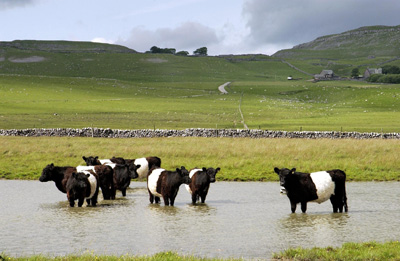Worming change neededto beat husk rise in adults

With recent spells of wet and warm weather, vets are warning producers to manage their worming practices more effectively when it comes to preventing outbreaks of lungworm.
Shifting patterns in the incidence and outbreak of lungworm in adult cattle have suggested a need for a change in worming procedure, according to recent reports.
Although the total number of cases has remained relatively stable since 1997, there has been a marked rise in adult cattle, now making up more than half of national cases.
Traditionally, lungworm, or husk as it is more commonly known, has been a problem predominantly in youngstock, says independent vet consultant Tony Andrews. “This has started to shift over the last 10 years, as the ability of youngstock to develop immunity has been affected by use of wormers.”
Wiltshire vet Keith Cutler has already seen a couple of large outbreaks in suckler herds this year. “These last few weeks of wet and warm weather has seen adult cattle break with it.
“More producers should be considering vaccination policies, particularly where cattle have been brought in last autumn, even though they may not have been seen coughing.” And rather than pushing for maximum weight gains, Mr Cutler advises looking at methods which ensure maximum immunity where possible.
“Worming products have become effective at killing larvae at an early age, preventing exposure to even a small amount of infection. This in turn has meant immunity has been unable to build up in youngstock, leading to adult cattle becoming susceptible,” adds Dr Andrews.

When producers do not either expose stock to a certain level of infection or vaccinate for lungworm, there is no guarantee animals can build up any level of resistance.
Ripon vet Jonathan Statham hasn’t seen cases of lungworm on any of his clients’ farms, but he is advising producers to be aware of overworming, more so where second grazers are concerned. “We’ve encouraged some farms to hold off normal practice of worming at turnout to develop a natural challenge, before vaccinating later in the season. This will provide more of a defence than over-worming with a pour-on product, which provides limited protection for those considering extended grazing.
But Dr Andrews stresses that it is difficult to know what exposure cattle are actually receiving at any one time without the aid of blood tests, and it is impossible to predict the actual level of infection.
At the end of grazing, he suggests testing the level of immunity before cattle are housed. “By taking blood samples before the winter housing period, the true level of immunity can be established, leaving producers to make worming decisions to suit the problem.”
As well as a possible change in epidemiology, changing climate has also had an effect on the shift, he adds. “Lungworm infections tend to overwinter and can last longer than a year. Milder weather has led to less kill-off in the winter period, particularly this year. A certain amount of infection will have remained active, perhaps contributing to early outbreaks.”
fwlivestock@rbi.co.uk
